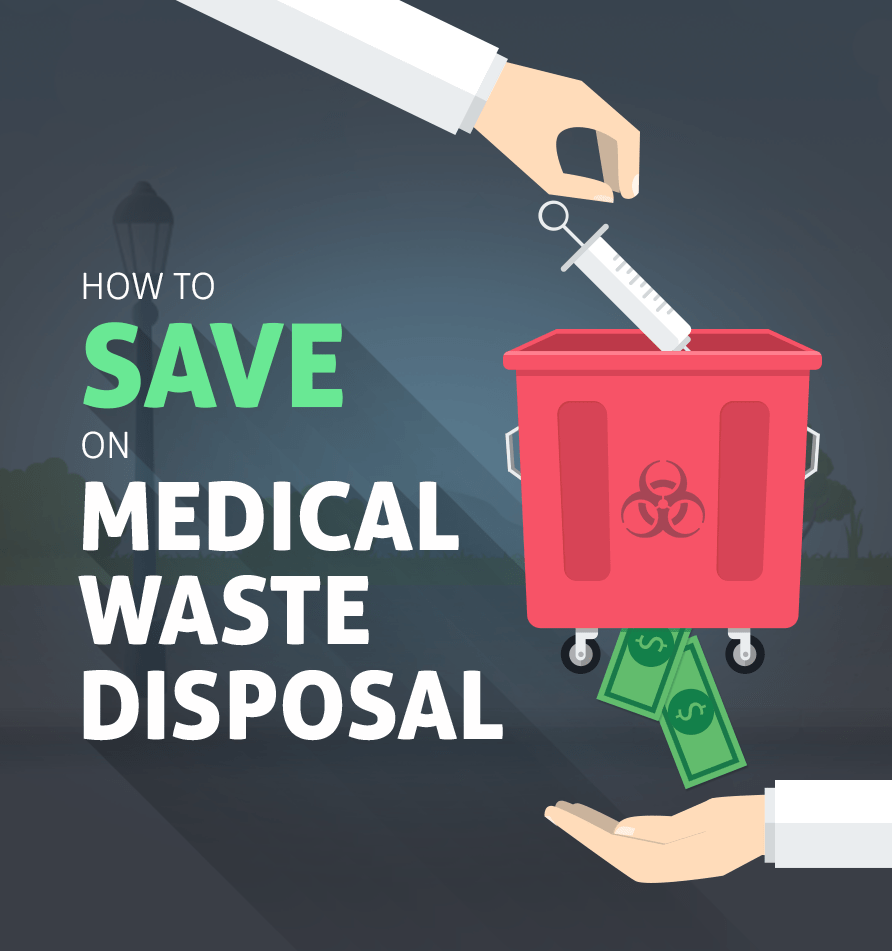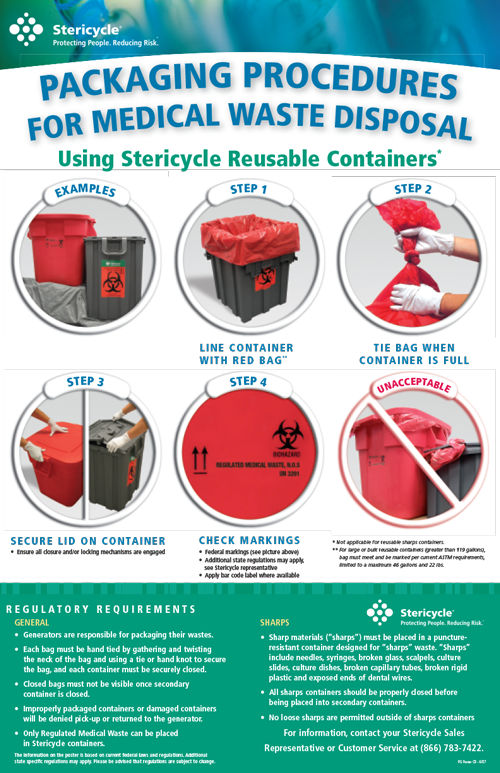Effective Techniques of Medical Garbage Disposal
Efficient methods of medical garbage disposal are crucial in preserving public health and wellness and environmental safety. Medical waste, consisting of sharps, pathological waste, and pharmaceutical waste, should be dealt with and dealt with appropriately to stop the spread of infections and shield the atmosphere. This requires adherence to strict laws and the application of expert waste administration techniques.
Proper partition of clinical waste, safe and safe and secure storage space, efficient treatment and disinfection methods, and environmentally-friendly disposal choices are essential elements of an efficient medical garbage disposal system. Professional waste monitoring solutions play a vital function in guaranteeing compliance with guidelines and lessening the risks related to incorrect disposal. By employing these approaches, health care centers can contribute to a much safer and cleaner atmosphere while safeguarding the well-being of the area.
Proper Segregation of Clinical Waste
Correct segregation of medical waste is essential for guaranteeing the reliable and safe disposal of these possibly unsafe products. Clinical waste describes any kind of waste created throughout healthcare tasks, such as medical facilities, clinics, labs, and study facilities. It consists of a large range of products, such as used needles, syringes, polluted dressings, ended or unused drugs, and biological materials.
By setting apart clinical waste, medical care facilities can lessen the threat of infections, injuries, and ecological contamination. The procedure includes classifying waste into various kinds, such as sharps, contagious waste, pharmaceutical waste, and non-hazardous waste. Each type calls for details handling, product packaging, and disposal approaches to stop exposure to health care workers, waste administration personnel, and the public.
To guarantee appropriate partition, medical care facilities ought to create clear standards and offer sufficient training to employee. This consists of educating workers on the various waste classifications, appropriate packaging strategies, and using ideal containers - WasteX Medical Waste Disposal. Furthermore, clear signage and color-coding systems can be carried out to help with the identification and partition of different waste kinds
Safe and Secure Storage Space of Medical Waste
Safe and safe storage of clinical waste is critical for preserving the honesty and control of possibly hazardous products. Correct storage space not only protects healthcare employees and the basic public from direct exposure to harmful substances yet additionally prevents environmental contamination.
To guarantee safe storage space, medical centers need to stick to certain standards. First of all, waste needs to be kept in puncture-resistant and leak-proof containers that are classified properly. These containers ought to be snugly sealed to stop any kind of leak or spills. In addition, the storage space area must be safe and unattainable to unauthorized personnel, lessening the threat of unexpected direct exposure.
Appropriate partition of medical waste is additionally essential for secure storage space. Various types of waste, such as sharps, infectious materials, and pharmaceutical waste, need to be separated to stop cross-contamination. This segregation can be achieved via the usage of color-coded containers or containers.
Regular surveillance and examination of the storage area are crucial to identify any type of possible risks or breaches. This includes checking for indications of damage or wear and tear in the containers, guaranteeing appropriate air flow, and monitoring temperature level and moisture levels.
Efficient Therapy and Sanitation Approaches

One generally made use of therapy method is autoclaving, which includes subjecting the waste to high-pressure heavy steam at temperatures over 121 degrees Celsius. This procedure effectively eliminates microbes and damages contagious representatives, making the waste secure for further disposal. Another method is incineration, which entails shedding the waste at heats. Incineration not just eliminates microorganisms but additionally lowers the waste volume with burning.
Chemical sanitation is an additional effective approach for treating clinical waste. This method involves utilizing disinfectants such as chlorine compounds, phenolic substances, or hydrogen peroxide to kill or suspend pathogens (WasteX Medical Waste Disposal). Chemical sanitation is usually utilized for liquid waste, such as research laboratory examples or physical liquids
Recently, different therapy techniques such as microwave disinfection, irradiation, and organic therapy have additionally acquired attention. These techniques provide benefits such as lowered ecological impact and energy intake contrasted to conventional methods.
Environmentally-friendly Disposal Options
In the world of medical waste disposal, considering environmentally-friendly alternatives is essential. Healthcare facilities create a substantial quantity of waste, including transmittable products, pharmaceuticals, and chemicals, which can posture serious threats to human health and wellness and the setting if not managed effectively. The good news is, there are several environmentally-friendly disposal options offered that can assist mitigate these threats.
Reusing clinical waste involves setting apart and processing certain materials for reuse or repurposing. Furthermore, some medical care facilities have actually implemented recycling programs for particular medical devices or equipment, more minimizing waste generation.
This technique includes transforming clinical waste right into review power with procedures like incineration or anaerobic food digestion. Anaerobic digestion, on the other hand, breaks down natural waste in the lack of oxygen, generating biogas that can be made use of for power or warmth generation.

Benefits of Professional Waste Management Provider
One considerable advantage of expert waste monitoring services is the boosted efficiency in getting rid of and taking care of of medical waste. By using expert waste management solutions, medical care facilities can guarantee that all clinical waste is handled and disposed of effectively, reducing the threat of contamination and the spread of diseases.
Professional waste administration solutions use skilled and experienced workers that are knowledgeable about the guidelines and standards for clinical waste disposal. They have access to specialized tools and tools that enable them to deal with different kinds of medical waste securely and effectively. These solutions also have well-established treatments and methods in place to ensure that waste is set apart, packaged, moved, and disposed of in conformity with neighborhood, state, and government policies.
Moreover, expert waste administration services can provide health care facilities with extensive waste management services. They can use services such as waste collection, transportation, therapy, and disposal, customized to the details demands and needs of the center. This removes the burden of handling waste internally, enabling healthcare team to concentrate on supplying quality individual care.
Conclusion
To conclude, effective techniques of medical waste disposal include correct partition, safe storage space, therapy and disinfection, and environmentally-friendly disposal alternatives (WasteX Medical Waste Disposal). These techniques ensure the safe handling and administration of medical waste, preventing the spread of infections and protecting the environment. Expert waste administration services play a critical function in executing these techniques and guaranteeing conformity with laws. By adhering to these techniques, health care facilities can add to a more secure and much healthier setting for both people and the neighborhood.
Clinical waste, consisting of sharps, pathological waste, and pharmaceutical waste, must be handled and disposed of properly to stop the spread of infections and secure the environment.Correct segregation of clinical waste, risk-free and safe storage, reliable treatment and sanitation approaches, and environmentally-friendly disposal choices are key parts of an effective medical waste disposal system. The procedure includes categorizing waste right into various kinds, such as sharps, transmittable waste, pharmaceutical waste, and non-hazardous waste. By utilizing professional waste management services, health care centers can make sure that all clinical waste is dealt with and disposed of effectively, reducing the threat of contamination and the spread of diseases.
Professional waste management services utilize qualified and skilled employees that are knowledgeable concerning the policies and standards for medical waste disposal.